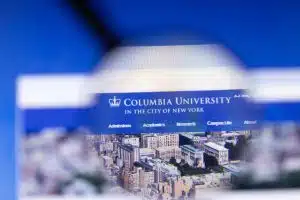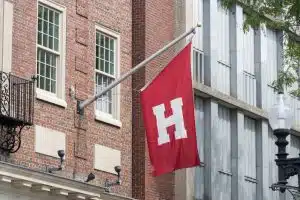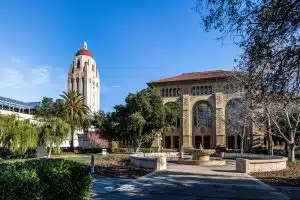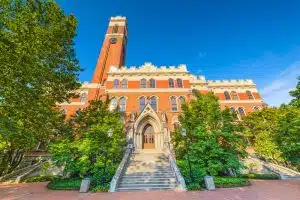Exploring Columbia University’s Enrollment Trends
Columbia University, a prestigious Ivy League institution, hosts world-renowned scholars and aspiring students every year in its hallowed halls. An analysis of the university’s enrollment trends provides an intriguing study into the changing dynamics of higher education. This article will unravel specific factors that have shaped Columbia University’s enrollment trends over the years.
Understanding Enrollment Trends
It is important to understand what are ‘enrollment trends.’ Essentially, enrollment trends refer to the patterns or changes observed in the number of students joining an educational institution over a specific period. These trends can provide valuable insights into the university’s growth, popularity, and the effectiveness of its diversity and inclusion strategies.
When analyzing enrollment trends, it is crucial to consider various factors that may influence the data. These factors include changes in the economy, advancements in technology, shifts in societal norms, and even global events such as pandemics. By taking these factors into account, you can gain a comprehensive understanding of the enrollment landscape and make informed decisions to enhance the educational experience for students.
Defining Enrollment Trends
Enrollment trends are typically analyzed annually and can be categorized into undergraduate and graduate trends. Undergraduate enrollment trends capture the patterns of students enrolling in bachelor’s degree programs, while graduate enrollment trends focus on the students joining postgraduate programs.
It is important to note that enrollment trends can vary across different disciplines and departments within an educational institution. For instance, the enrollment trends in the STEM (Science, Technology, Engineering, and Mathematics) fields may differ from those in the humanities or social sciences. Understanding these nuances can help universities tailor their recruitment strategies and academic offerings to meet the demands of prospective students.
Importance of Analyzing Enrollment Trends
Analyzing enrollment trends is not just about numbers. The data can reveal demographic changes, the impact of policy alterations, and adaptability to global events. For example, a rise in enrollment from a certain ethnic or socio-economic group over the years could indicate successful recruitment strategies targeted at those demographics. On the other hand, a decline could signal issues needing attention.
Moreover, analyzing enrollment trends allows universities to identify potential areas for growth and improvement. By understanding the factors that attract or deter students from enrolling, institutions can implement targeted initiatives to enhance the overall student experience. This could include offering new programs, improving campus facilities, or developing support services tailored to the needs of specific student populations.
Furthermore, enrollment trends can provide insights into the effectiveness of diversity and inclusion strategies. By monitoring the enrollment of underrepresented groups, universities can assess whether their efforts to create an inclusive and equitable learning environment are yielding positive results. This information can guide future initiatives aimed at promoting diversity and fostering a sense of belonging among all students.
In conclusion, analyzing enrollment trends is a multifaceted process that goes beyond mere numbers. It involves understanding the underlying factors, recognizing disciplinary differences, and leveraging the data to drive positive change within educational institutions. By continuously monitoring and evaluating enrollment trends, universities can adapt and thrive in an ever-evolving educational landscape.
Historical Overview of Columbia University’s Enrollment
Now that you understand what enrollment trends are, here is a historical look at Columbia University’s enrollment patterns.
Columbia University, located in New York City, has a rich history dating back to its founding in 1754. Over the years, the university has witnessed significant changes in its student body composition, reflecting the evolving societal landscape and the institution’s commitment to diversity and inclusivity.
Enrollment Trends in the Early Years
In the early years, Columbia, like many other universities at the time, had a predominantly white, male student body. The university’s enrollment primarily consisted of individuals from privileged backgrounds who had the means and access to pursue higher education. However, as the need for diversity and representation became more apparent, the university took strides to increase enrollment from underrepresented groups.
During the late 19th and early 20th centuries, Columbia University began actively recruiting students from diverse backgrounds, including women and individuals from different ethnic and racial backgrounds. This marked a significant turning point in the university’s enrollment history, as it started to embrace a more inclusive approach to education.
The real change occurred in the mid-20th century when enrollment started to increase significantly, reflecting the shift towards a more inclusive academic society. Columbia University saw a surge in enrollment as more individuals from marginalized communities gained access to higher education. This period witnessed the emergence of student activism and social movements that advocated for equal opportunities and representation within the university.
Enrollment Shifts in Recent Decades
In recent decades, Columbia University’s enrollment trends have shown more diversity, not just in terms of ethnicity but also in terms of the fields of study chosen by students. While traditional subjects like law and business continue to thrive, newer fields such as data science and environmental studies have experienced considerable increases.
The advent of technology and the growing importance of interdisciplinary studies have led to a shift in enrollment patterns at Columbia University. Students are now drawn to emerging fields that address contemporary challenges, such as climate change, sustainable development, and technological innovation. This shift reflects the university’s commitment to staying at the forefront of academic research and providing students with the knowledge and skills needed to tackle complex global issues.
Furthermore, Columbia University has actively fostered an environment that encourages collaboration and cross-disciplinary exploration. This approach has attracted students who seek to combine their interests and expertise from various fields, leading to a diverse and vibrant academic community.
As Columbia University continues to evolve and adapt to the changing needs of society, its enrollment trends will likely reflect the ongoing pursuit of inclusivity, innovation, and academic excellence. The university’s commitment to providing a well-rounded education to students from all backgrounds ensures that its enrollment patterns will continue to be dynamic and reflective of the diverse world we live in.
Breakdown of Undergraduate Enrollment Trends
Having reviewed the general historical trends, let’s now move to a closer examination of undergraduate enrollment patterns.
Understanding the dynamics of undergraduate enrollment is crucial for universities to effectively plan for the future and meet the evolving needs of students. By analyzing the yearly undergraduate enrollment statistics, students can gain valuable insights into the growth and fluctuations of the student body at Columbia University.
Yearly Undergraduate Enrollment Statistics
The undergraduate student body at Columbia University has consistently grown over the years, reflecting the university’s commitment to academic excellence and its ability to attract a diverse range of students. However, like many institutions, Columbia University experienced a slight dip in undergraduate enrollment in the early 2000s.
This decline in enrollment can be attributed to various factors, including economic downturns that affected families’ ability to afford higher education. Despite these challenges, Columbia University demonstrated resilience and adaptability, quickly rebounding and showcasing its ability to attract students even in changing global circumstances.
Since then, the university has experienced a steady increase in undergraduate enrollment, driven by its strong academic reputation, innovative programs, and commitment to providing a supportive learning environment.
Factors Influencing Undergraduate Enrollment
Several factors play a significant role in shaping undergraduate enrollment trends at Columbia University. These factors not only impact the university’s ability to attract and retain students but also contribute to the overall student experience.
One crucial factor is the university’s academic reputation. Columbia University’s longstanding tradition of excellence in education, research, and innovation has established it as a top-tier institution, attracting students from around the world who seek a rigorous and intellectually stimulating learning environment.
Financial aid availability is another critical factor that influences undergraduate enrollment. Recognizing the importance of making education accessible to all, Columbia University has implemented robust financial aid programs to support students from diverse socioeconomic backgrounds. These initiatives have played a significant role in attracting talented individuals who may not have otherwise had the opportunity to pursue higher education.
Changing demographic trends also impact undergraduate enrollment. As the world becomes more interconnected, universities like Columbia have seen an increase in international student enrollment. This diversity enriches the campus community, fostering cross-cultural understanding and preparing students for a globalized workforce.
In recent times, the emergence of online learning opportunities has also influenced undergraduate enrollment patterns. Recognizing the potential of technology to enhance education, Columbia University has embraced online learning platforms, offering students the flexibility to pursue their studies remotely. This innovative approach has attracted students who may prefer a more flexible learning environment or who are unable to attend classes on campus due to various commitments.
By considering these factors and continually adapting to the changing landscape of higher education, Columbia University has successfully maintained its position as a leading institution for undergraduate education.
Analysis of Graduate Enrollment Trends
Now let’s switch gears and explore the university’s graduate enrollment trends.
Overview of Graduate Enrollment Numbers
Graduate enrollment at Columbia has shown a steady upward trend, particularly in disciplines like engineering and healthcare. The university’s strong faculty, robust research infrastructure, and location in New York City, a global hub of opportunities, contribute significantly to these growing numbers.
Within the engineering field, the demand for highly skilled professionals has been on the rise due to technological advancements and the need for innovation. Columbia University, with its renowned engineering programs and close ties to industry leaders, has become an attractive choice for aspiring engineers. The university’s state-of-the-art laboratories and research centers provide students with hands-on experience and the opportunity to work on groundbreaking projects.
In the healthcare sector, Columbia’s graduate programs have gained popularity due to the increasing demand for healthcare professionals and the university’s collaborations with prestigious medical institutions in New York City. Students in these programs benefit from clinical rotations and internships at renowned hospitals, allowing them to gain practical skills and make valuable connections in the industry.
Influences on Graduate Enrollment
Graduate enrollment is greatly influenced by job market trends, research funding, shifts in industry demands, and university strategies for attracting international students. For instance, increased opportunities in data analysis and IT sectors have led to a surge in students enrolling in related graduate programs.
In recent years, the demand for data analysts and IT professionals has skyrocketed as organizations across various industries recognize the importance of leveraging data for decision-making. Columbia University, with its strong emphasis on data science and computer science programs, has been quick to adapt to this trend. The university has established partnerships with leading tech companies, providing students with internship opportunities and access to cutting-edge technologies.
Furthermore, Columbia’s efforts to attract international students have also contributed to the growth in graduate enrollment. The university’s reputation as a global institution and its commitment to diversity and inclusion have made it a top choice for students from around the world. The vibrant multicultural environment on campus enriches the educational experience and prepares students for global careers.
Research funding plays a crucial role in graduate enrollment as well. Columbia University’s strong track record of securing research grants and its focus on interdisciplinary research have attracted students who are eager to be part of groundbreaking projects. The opportunity to work alongside renowned faculty members and contribute to cutting-edge research has been a significant draw for prospective graduate students.
Impact of Global Events on Columbia University’s Enrollment
Global events, whether political, economic, or social, can dramatically affect a university’s enrollment. This section will examine the impact of such events on Columbia’s enrollment over the years.
Effects of Economic Changes on Enrollment
Economic downturns often influence people’s decision to pursue higher education. For example, during the 2008 economic recession, Columbia’s enrollments spiked as many individuals chose further education over entering a shaky job market. The uncertainty and instability caused by the recession led individuals to seek refuge in the pursuit of knowledge and skills that would make them more competitive in the future job market.
Moreover, economic changes can also impact the availability of financial aid and scholarships, which in turn affects enrollment. During times of economic prosperity, universities may have more resources to offer generous financial aid packages, attracting a larger pool of applicants. Conversely, during economic downturns, universities may face budget cuts, leading to a reduction in financial aid opportunities and potentially impacting enrollment numbers.
Impact of Political Events on Enrollment
Political changes, such as modifications in immigration policies or visa rules, can significantly influence international student enrollments. Columbia University, being a diverse international institution, has experienced such fluctuations, showing its resilience and adaptability in the face of changing political environments.
For instance, changes in visa regulations can make it more challenging for international students to study in the United States. This can lead to a decrease in international enrollments as potential students face increased barriers to entry. On the other hand, policies that promote international education and ease visa restrictions can have a positive impact on enrollment, attracting a more diverse pool of students from around the world.
Furthermore, political events on a global scale can also shape the perception of a country and its institutions. In times of political stability and positive international relations, universities like Columbia may experience an increase in applications from international students who view the country as a welcoming and safe destination for their education. Conversely, political turmoil or conflicts can deter students from considering a university in a particular country, leading to a decline in enrollment.









































